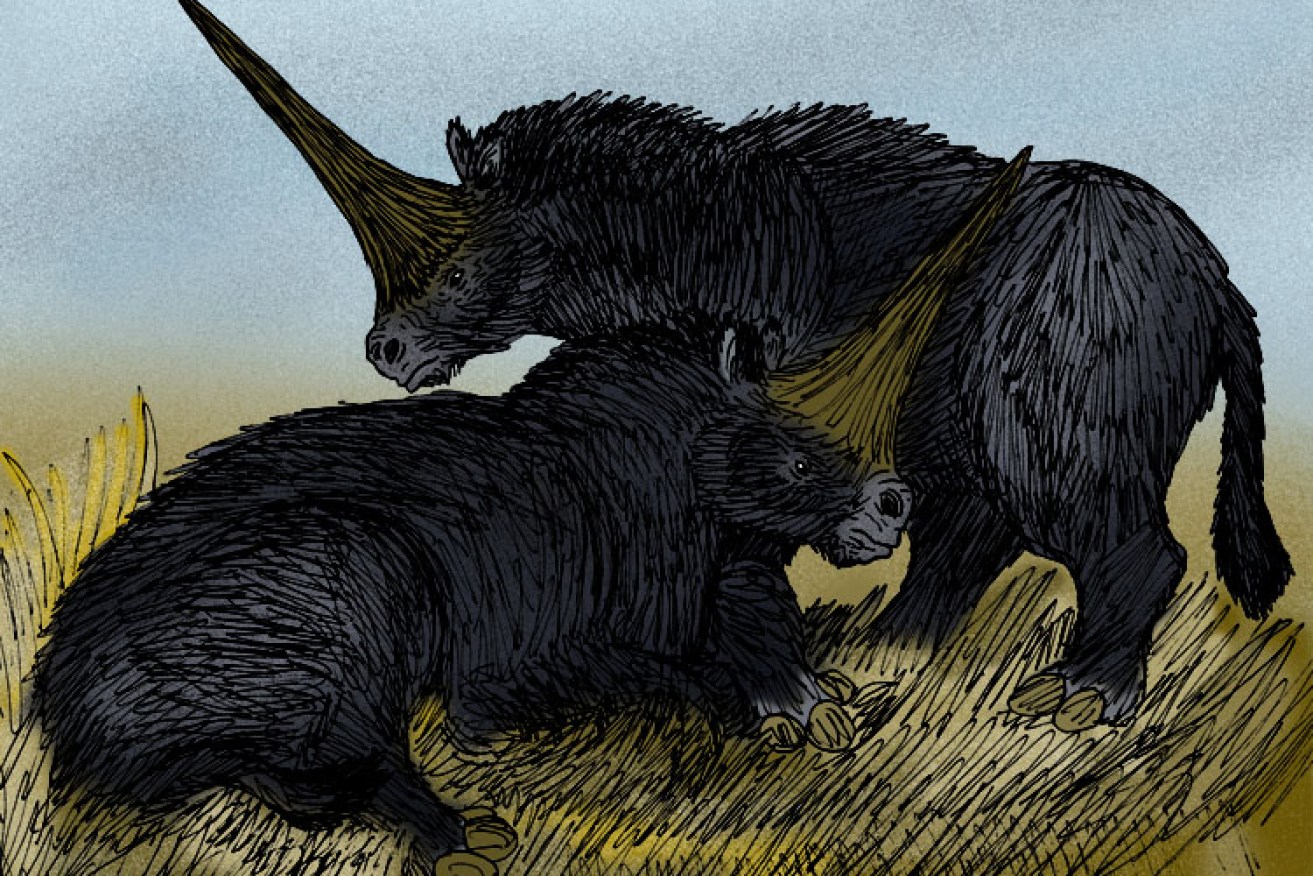The giant ‘unicorn’ that once walked the Earth


A pair of Siberian unicorns. Photo: Wikipedia
The discovery of the fossil remains of a ‘Siberian unicorn’ in Kazakhstan has been heralded as game-changing by paleontologists.
Research published in the American Journal of Applied Science reveals a well-preserved skull of the ‘unicorn’ – actually a long-horned rhinoceros – has been dated at 29,000 years old.
The rhinoceros, whose scientific name is Elasmotherium sibiricum, was previously thought to have died out around 350,000 years ago.
• Prehistoric sea dragon ‘wiped out by climate change’
• All the best dinosaurs looked like vicious chooks
• This is the story of the greatest shark to ever live
The skull was found in Kozhamzhar in Kazakhstan’s Pavlodar region.
This means the giant beast would have been roaming the area at the same time as humans – shaking up our perceptions of the last ice age.
“Most likely, it was a very large male,” paleontologist Andrey Shpanski of Tomsk State University said of the remains.
“The dimensions of this rhino today are the biggest of those described in the literature.”
The rhinos are thought to have been vegetarian, and could have been as long as five metres, two metres tall and weighing in at up to four tons.

A pair of Siberian unicorns. Photo: Wikipedia
Dr Gilbert Price, a researcher at The University of Queensland who specialises in megafauna extinctions, said the discovery was an important one.
“Up until the publication of this study it was thought that these animals actually died out before the first modern humans evolved and migrated into that Siberia area,” Dr Price told The New Daily.
“The new studies show we’ve got these giant rhinoceros beasts still hanging on until that period 30,000 years ago – around the same time humans migrated into Siberia.
“It really tells us that we don’t know as much about that last series of ice ages as what we think we do.
“If you can have one single fossil with one single date that extends the time range of this particular species by over 300,000 years that’s something that’s quite significant.
“It really has changed our understanding now.”
Dr Price said the use of term ‘unicorn’ was something seized on by media to make the complicated science more palatable to readers, but said there is nothing mythical about the Elasmotherium sibiricum.
“The reason it looks like a rhinoceros is because it is a rhinoceros,” Dr Price said.
“When people throw around terms like unicorn it’s just to make the science a little more accessible to people. It conjures up all these images of these mythical beasts.
“I can absolutely tell you it’s not any kind of mythical unicorn.”








